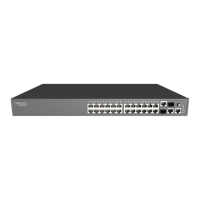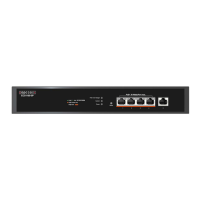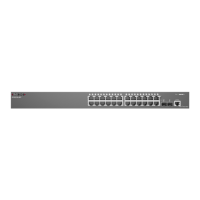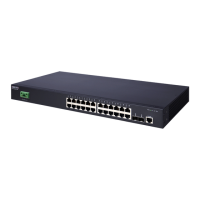C
HAPTER
21
| SNMP Commands
SNMP Target Host Commands
– 587 –
community-string - Password-like community string sent with the
notification operation to SNMP V1 and V2c hosts. Although you can
set this string using the snmp-server host command by itself, we
recommend defining it with the snmp-server community command
prior to using the snmp-server host command. (Maximum length:
32 characters)
version - Specifies whether to send notifications as SNMP Version
1, 2c or 3 traps. (Range: 1, 2c, 3; Default: 1)
auth | noauth | priv - This group uses SNMPv3 with
authentication, no authentication, or with authentication and
privacy. See "Simple Network Management Protocol" on
page 397 for further information about these authentication and
encryption options.
port - Host UDP port to use. (Range: 1-65535; Default: 162)
DEFAULT SETTING
Host Address: None
No tif ication Type : Tra ps
SNMP Version: 1
UDP Port: 162
COMMAND MODE
Global Configuration
COMMAND USAGE
◆ If you do not enter an snmp-server host command, no notifications
are sent. In order to configure the switch to send SNMP notifications,
you must enter at least one snmp-server host command. In order to
enable multiple hosts, you must issue a separate snmp-server host
command for each host.
◆ The snmp-server host command is used in conjunction with the
snmp-server enable traps command. Use the snmp-server enable traps
command to enable the sending of traps or informs and to specify
which SNMP notifications are sent globally. For a host to receive
notifications, at least one snmp-server enable traps command and the
snmp-server host command for that host must be enabled.
◆ Some notification types cannot be controlled with the snmp-server
enable traps command. For example, some notification types are
always enabled.
◆ Notifications are issued by the switch as trap messages by default. The
recipient of a trap message does not send a response to the switch.
Traps are therefore not as reliable as inform messages, which include a
request for acknowledgement of receipt. Informs can be used to ensure
that critical information is received by the host. However, note that
informs consume more system resources because they must be kept in
memory until a response is received. Informs also add to network
traffic. You should consider these effects when deciding whether to
issue notifications as traps or informs.

